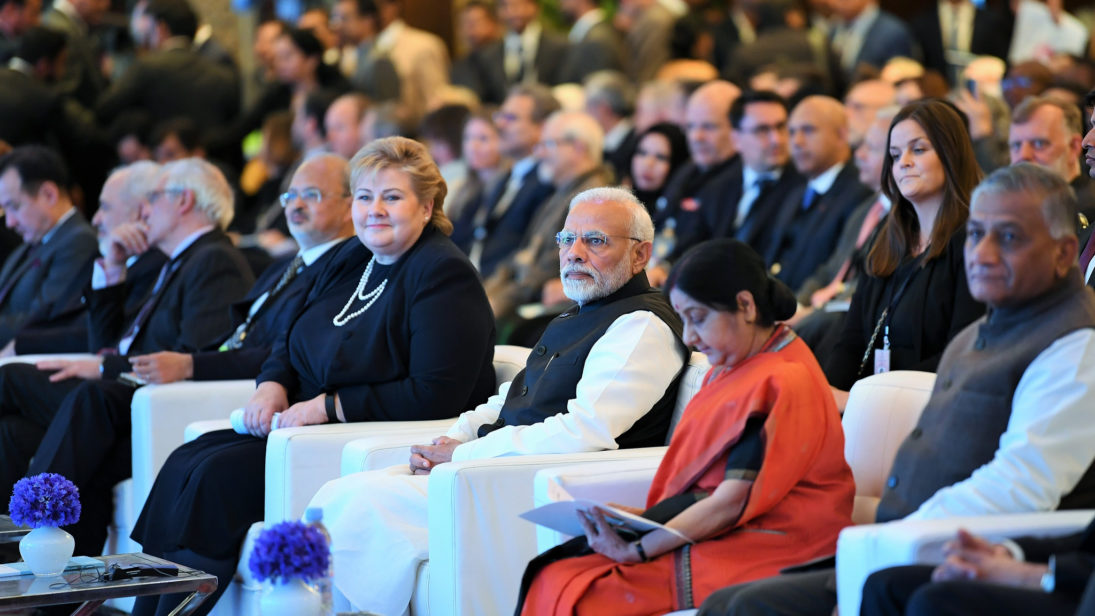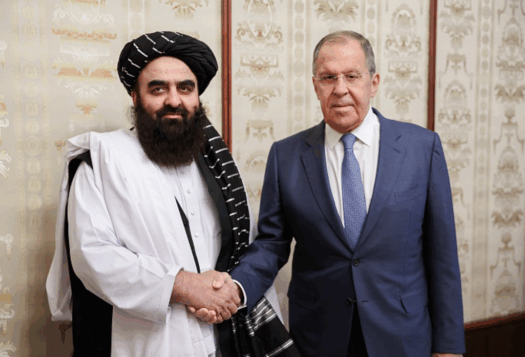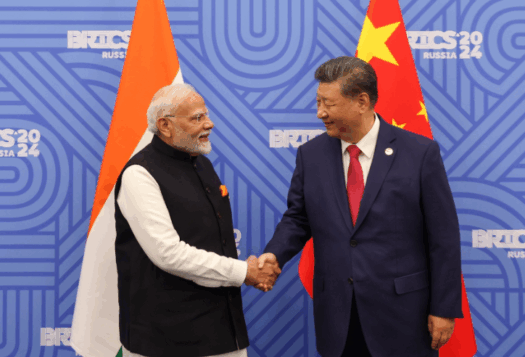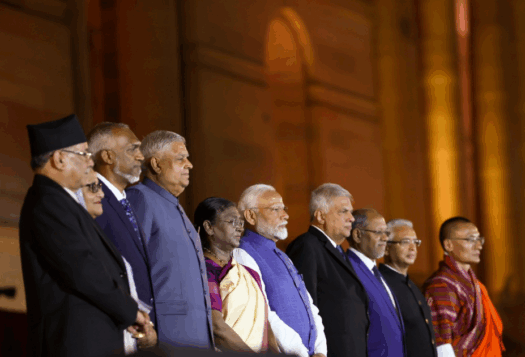
Four successive wars and 46 premier-level engagements have not led to any concrete resolution of the seventy-year-old Kashmir dispute between India and Pakistan. Since the late 1980s, local insurgents in Kashmir—mostly Pakistan-backed—have picked up arms giving a call for Kashmir’s independence, complicating the situation for India. Norwegian Prime Minister Solberg’s recent comments in New Delhi offering to mediate the Kashmir dispute have sparked a row and fueled speculation of behind-the-scenes track-two diplomacy. Those who are mindful of India’s “strategic autonomy doctrine” would brush aside such guesswork in a trice. Foreign policy chroniclers would remind us of the watershed Shimla Agreement (1972) wherein both nations agreed to resolve the dispute bilaterally against the previous era of Nehruvian fantasy wherein the United Nations or an international power would play a remedial role. In the last decade, India has turned down mediation offers by the United States–the Obama and Trump administrations–the United Nations (UN) Secretary General Antonio Guterres, Russian President Vladimir Putin, and others such as Iran, Bahrain, Turkey, and China.
Just as before, Prime Minister Modi is unlikely to outsource the task of mediation today due to the political sensitivity of Kashmir issue, nor can movement happen over the dispute ahead of the Indian elections. In an earlier article for the Stimson Center, Harinder Baweja, a journalist who has reported extensively in Kashmir, argues that India has been hesitant to allow foreign intervention on Kashmir for fear of allowing further international intervention in India’s internal affairs, triggering a communal backlash, or opening the floodgates for such demands in other states.
While all these may very well be true from a strategic perspective, the domestic developments of the last two decades have added political challenges to the issue. Since the 1990s, with the rise in the political fortunes of the Bharatiya Janata Party (BJP), a Hindu-nationalist party that conceives Indian identity as a geocultural one, the irredentist attitude towards Kashmir has been amplified in the popular imagination. Given the rhetoric on Kashmir employed at the hustings, and the subtle Hindu-Muslim angle associated with it, even a small concession to Pakistan has the potential to turn the issue into a domestic disaster.
An Appropriate Time for Kashmir?
Thetiming factor for the Kashmir peace process is crucial from a domestic angle.As can be seen from recent history, Indian prime ministers usually bite thebullet on engagement on the Kashmir issue early in their tenure. Later, as thegeneral election approaches, they are reluctant to be soft on Kashmir in theirparleys either with the separatists or with Islamabad, lest their politicalopponent accuses them caving against the national interest.
Since the inception of the Kashmir insurgency in the late 1980s, PM-level overtures from New Delhi towards the separatists started during the time of Deve Gowda (July 1996) and I.K. Gujral (July 1997), the foreign-minister-turned-PM known for his pacifying Gujral Doctrine, almost nine years into the insurgency. A common denominator in both the premiers’ labor was their early start; both dashed to Srinagar in the first two months of their tenure.
Indian prime ministers usually bite the bullet on engagement on the Kashmir issue early in their tenure. Later, as the general election approaches, they are reluctant to be soft on Kashmir in their parleys either with the separatists or with Islamabad, lest their political opponent accuses them caving against the national interest.
The political rationale behind an early start is room for damage control for any potential disasters. For example, Vajpayee started pursuing peace process with Islamabad early on; this included reaching out to Kashmiri separatists. Nonetheless, after the setbacks in the form of attacks on the Indian Parliament and the Srinagar Assembly, Vajpayee assumed a strong posture as stressed to President Bush in his letter. This resulted in neutralizing of “Gazi Baba,” the commander of Jaish-e-Mohammad, the outfit that was responsible for both the attacks. The goodwill earned by New Delhi among local Kashmiri population was damageddue to such attrition operations as the locals perceived these arms-bearers as one among them. However, keeping a national constituency in mind, such heavy-handed operations were politically expedient for Vajpayee.
After its surprise rout in 2004, the BJP continued its strong stance in opposition and pumped up its rhetoric on Kashmir and Pakistan. Consequently, Manmohan Singh, Vajpayee’s successor, was severely constrained. For instance, he had to give up on the idea of visiting his birthplace in Pakistan that would have diplomatically availed him an outreach opportunity. In the words of Salman Khurshid, former External Affairs Minister from Congress, it is because “the BJP [created] mayhem at home.”

The political tactic of the BJP was to conflate all gentle gestures of the Singh government with the appeasement of Muslim voters domestically. Any overtures by Manmohan Singh towards Pakistan or the separatists were besieged by a slew of slanders – “minority-appeasers,” “hiding behind a ‘burqa’ of secularism,” or cherishing “Chicken Biryani” with Pakistan’s prime minister. These messages could easily resonate with the layman, given that Singh was leading a coalition government which included some Islamic fundamentalist parties like the All India Majlis-e-Ittehadul Muslimeen (AIMIM) until 2012. Manmohan Singh, however, audaciously pursued his peace agenda by giving space to Kashmiri separatists, even inviting them to New Delhi. He went so far as to invite then-Pakistan President Zardari and Prime Minister Gilani to watch a cricket match in India deemed as “cricket diplomacy.”
Unfortunately, neither Vajpayee nor Singh reaped any fruit. Each step forward from New Delhi received a Mumbai or a Parliament attack by Pakistan-based terrorists, making Indian premiers wary of any given leeway to the other side. The setbacks made timing an even more crucial factor. There was always a maverick motormouth waiting to accuse the PM of compromising the national interest on the eve of election.
Surprisingly, the previously bombastic Modi, who mocked Singh administration for writing “love letters” to Pakistan or not being hard-nosed with the separatists, started his term on a gentle note. Just as he was about to assume office, he sent his emissaries to Srinagar for a start de novo. Many of Modi’s goodwill gestures towards Pakistan–inviting Sharif for swearing-in, the impromptu Lahore layover, or meeting him again in Ufa–also happened in the first fifteen months. Skeptics could see this as virtue-signaling, realists as brasstacks politics.
One can argue that the Uri and Pathankot attacks were the final straws against Modi’s practical diplomacy. Nonetheless, a student of Indian politics would say that a shrewd Modi, who whips up anti-Pakistan sentiment election after election–a surgical strike before Uttar Pradesh elections or a Congress-Pakistan delegation meeting before Gujarat–could not afford to run with the hare and hunt with a hound, especially on election eve. Thus, beyond superficial exchange of pleasantries, the Modi administration’s reluctance to engage with newly-elected Khan government despite Khan’s stressing for dialogue underscores Modi’s domestic calculus.
Many of Modi’s goodwill gestures towards Pakistan–inviting Sharif for swearing-in, the impromptu Lahore layover, or meeting him again in Ufa–also happened in the first fifteen months. Skeptics could see this as virtue-signaling, realists as brasstacks politics.
With just a year to general elections, the BJP snubbed its four-year-long alliance with the People’s Democratic Party (PDP) in Jammu and Kashmir last summer. Given that the BJP could only do so much against the rising militancy in J&K as long as it remained hand-in-hand with its “soft separatist” local coalition partner, the move was designed to revamp the BJP’s appeal to its core constituencies in the state as well as its national constituency. With the 2019 general elections looming, staying in power in J&K without taking a harder line against separatists may have put Modi and the BJP on the backfoot nationally.
Modi’s Pakistan denouement, the Kartarpur Corridor, a corridor for Indian Sikhs to visit their holy shrine in Pakistan, just a few months before the general elections comes as an aberration to our argument of no deal with Pakistan while elections. Nevertheless, this move is politically expedient to garner votes in Sikh-dominated Punjab, and New Delhi was quick enough to reiterate its position of “no dialogue.”
Conclusion
Domestic compulsions loom large over the decisions of politicos in New Delhi. Elections can severely inhibit their ability to take a step forward and at times, scuttle the entire initiative. Kashmir is the new football in a race at the hustings to prove oneself as the torchbearers of the national interest. With the BJP in government or as a principal opposition, any movement on Kashmir is highly unlikely during an imminent election. Thus, Norwegian mediation less than 100 days ahead of the general election in India can merely be speculative smoke without any fire.
Image 1: MEAPhotogallery via Flickr
Image 2: Prakash Singh via Getty


